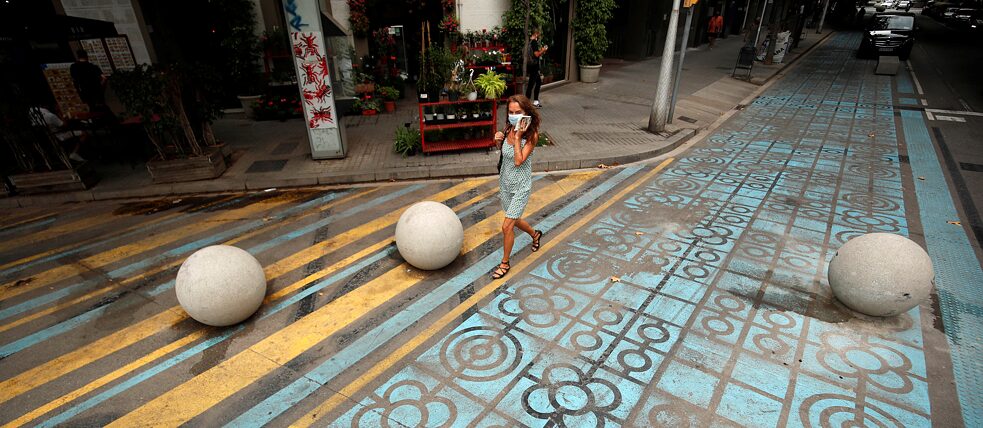Gender Equity
Creating Feminist Cities

Cities have the potential to improve women’s lives. But in reality, the planning of urban spaces often prioritises men’s routines and sidelines women’s needs and habits. What does a feminist city look like?
The first time I realized that the city I loved might not love me back I was stuck on a sidewalk wondering how I was going to get my stroller up a step and onto a crowded bus. I needed to take my baby to an early doctor’s appointment. But rush hour in London was never meant to accommodate my needs as a mother. Indeed, very little about the city was.
Shortly after that struggle some 23 years ago, I became a feminist urban geographer. In other words, an expert on all the ways cities fail women. I was, of course, far from the first person to have this revelation. Feminist urbanists had been trying to address the wilful ignorance of women’s needs, lives, bodies and routines since at least the 1970s.
Feminist urban planning makes the “shocking” claim that planners should listen to women. They must also recognise differences in how men and women use city spaces and systems. This can be accomplished by increasing the representation of women in city building professions such as planning, architecture, design, civil engineering, transportation and politics, all of which have long-been male dominated fields. Women also need to be consulted as city dwellers whose needs and contributions are valued.
Cities Hold Great Promise
A feminist approach to planning means employing a gender equity analysis of every urban decision, from bus stop locations to snow plow schedules. The aim of this process is to ensure choices do not reinforce the barriers women face in terms of safety, mobility, affordability and accessibility. It is also essential to take an intersectional perspective. Gender inequality is not the only force in women’s lives. Race, class, sexuality, age, ability and more are critical factors.Cities hold great promise for improving women’s lives through their combination of proximity, opportunity and choice. Too often, however, this promise is broken. Fear and danger limit women’s movements. Transportation plans favour men’s work routines and preferred modes and times of travel. Care work is little more than an afterthought in public space. High costs of living, especially housing, disproportionately affect women, who still experience a wage gap. Feminist urban planning aims to solve (or at least mitigate) these inequalities through gender-sensitive design and policy.
Feminist Planning in Reality
A feminist city, then, is one that both recognises women’s different experiences and attempts to address underlying inequalities. Care work is a good example. There are many things cities can do to make care work less burdensome. Space for strollers on public transit would help, as would clean and safe public toilets and physically accessible buildings, parks and streets. A feminist approach, however, is not interested in simply making it easier for women to continue doing an unfair share of this work. Long term, the goal is to create systems, spaces, and supports that allow care work to be shared evenly not just across genders, but across whole communities.Accessibility, safety, and affordability are things that everybody benefits from.
Prioritising Gender Equity
Barcelona is also paying attention to women in its latest plans to increase liveability. Using feminist methods of consultation, the city is drawing on community input to inform redesign and redevelopment agendas. Gender is at the centre of these plans through an explicit focus on “everyday life”. For example, a school mobility plan prioritises the efficient and safe movement of children and caregivers through the city at key times, rather than sidelining these needs in favour of commuters and delivery traffic. The “superblocks” plan to limit traffic within designated areas is also meant to encourage safety, equitable use of public space and community cohesion.City builders in both Aspern and Barcelona insist that in prioritising gender equity, they are improving city life for everyone. After all, accessibility, safety, and affordability are things that everybody benefits from. Moreover, many elements of gender-equitable design overlap with sustainability initiatives. The 15-minute city concept, for instance, places high importance on proximity of key services such as hospitals, offices or restaurants and active modes of transportation. Feminists have long argued that proximity is crucial for supporting women as workers and caregivers; women are also already heavier users of public transit and take more pedestrian journeys. Thus, there is every reason to believe that a feminist city is also a sustainable city.